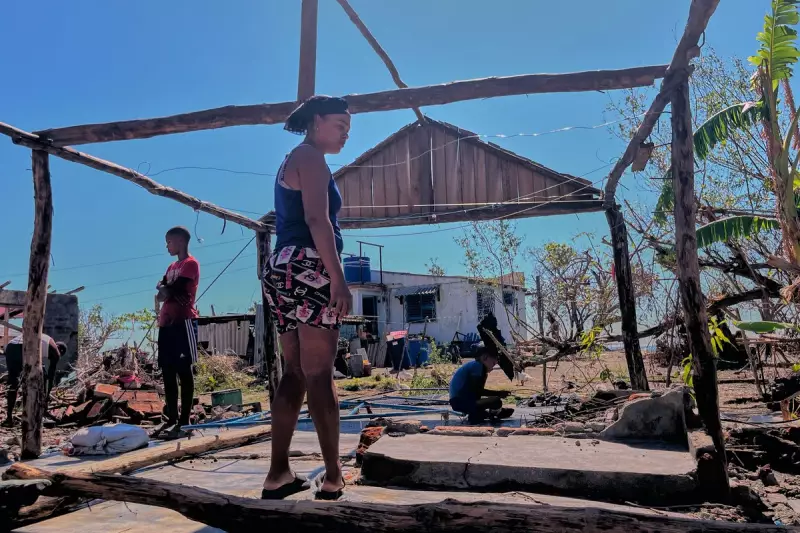
A Month of Darkness: Cuba's Eastern Region Struggles to Recover
Almost a full month after Hurricane Melissa, one of the most powerful Atlantic storms in recorded history, battered eastern Cuba, thousands of citizens continue to endure life without electricity, running water, or adequate shelter. The situation remains critical, with daily life defined by a relentless struggle for basic necessities.
Life in the Ruins: Stories from the Ground
In the town of Río Cauto, the rhythm of life has been brutally reset. By day, families make the arduous trek to the nearest river to fill plastic containers with water. By night, they cram together to sleep in temporary shelters and tents set up in repurposed schools. "We lost everything in the flood," shared 80-year-old Lucía García. "I am very depressed and very sad here." She now lives in a small classroom with her two sons and her ailing, bedridden 81-year-old husband.
The school shelter in Río Cauto houses 14 families and provides daily meals for them and 25 other families staying with relatives. Water delivery trucks are a rare sight, passing through only every three or four days. The scale of displacement is immense. According to a November 10 report in the official Granma newspaper, more than 2,300 people were evacuated from the Río Cauto area, with over 750 taking refuge in private homes, despite official claims that the return of residents has been 'completed'.
The devastation extended to the nearby town of Los Mangos, where residents described catastrophic flooding that struck a day after the hurricane made landfall. "By dawn, the entire village was underwater," recalled Anisleydis Hidalgo. While evacuated before the storm, she returned to a scene of utter destruction she never anticipated.
Mounting Frustration and a Plea for Aid
In Los Mangos, 58 people, including 30 children, are sharing just 10 tents donated by the government of India. Lianet Socarras, a social worker from the area, pinpointed the most pressing issue: "The most critical problem we have now is the supply of drinking water in the community." The town is also plagued by scheduled power outages that last for hours, worsening an already desperate scenario.
Patience is wearing thin across the affected regions. In the municipality of Guamá, several towns are still reeling. Residents in El Carmen, who had been without power even before the hurricane, recently blocked a main highway with fallen trees and electrical posts in protest. Alfredo López, director general of the National Electric Union, engaged in a heated discussion with residents, stating, "Everyone wants electricity, and we are working tirelessly to achieve this," with repairs potentially lasting until mid-December.
For individuals like 65-year-old retiree Altagracia Fonseca, the emotional toll is overwhelming. "The sea came into my house," she said, describing how it ruined her belongings. Having evacuated with only a small bag of essentials, she broke down in tears upon seeing the state of her home. Elizandra Sorrilla, living with her family and their dog in a makeshift shelter within a small grocery store, echoed the sentiment of many: "They tell us they’re going to help us, but the resources haven’t arrived yet."
The United Nations reports that approximately 53,000 people in Cuba have been unable to return to their homes, with 7,500 living in official shelters. The recovery efforts are further complicated by heightened tensions between Cuba and the U.S., involving a radical tightening of long-standing sanctions. While no storm-related deaths were reported in Cuba, the nation now faces a protracted humanitarian challenge as it battles to restore basic services to its people.





